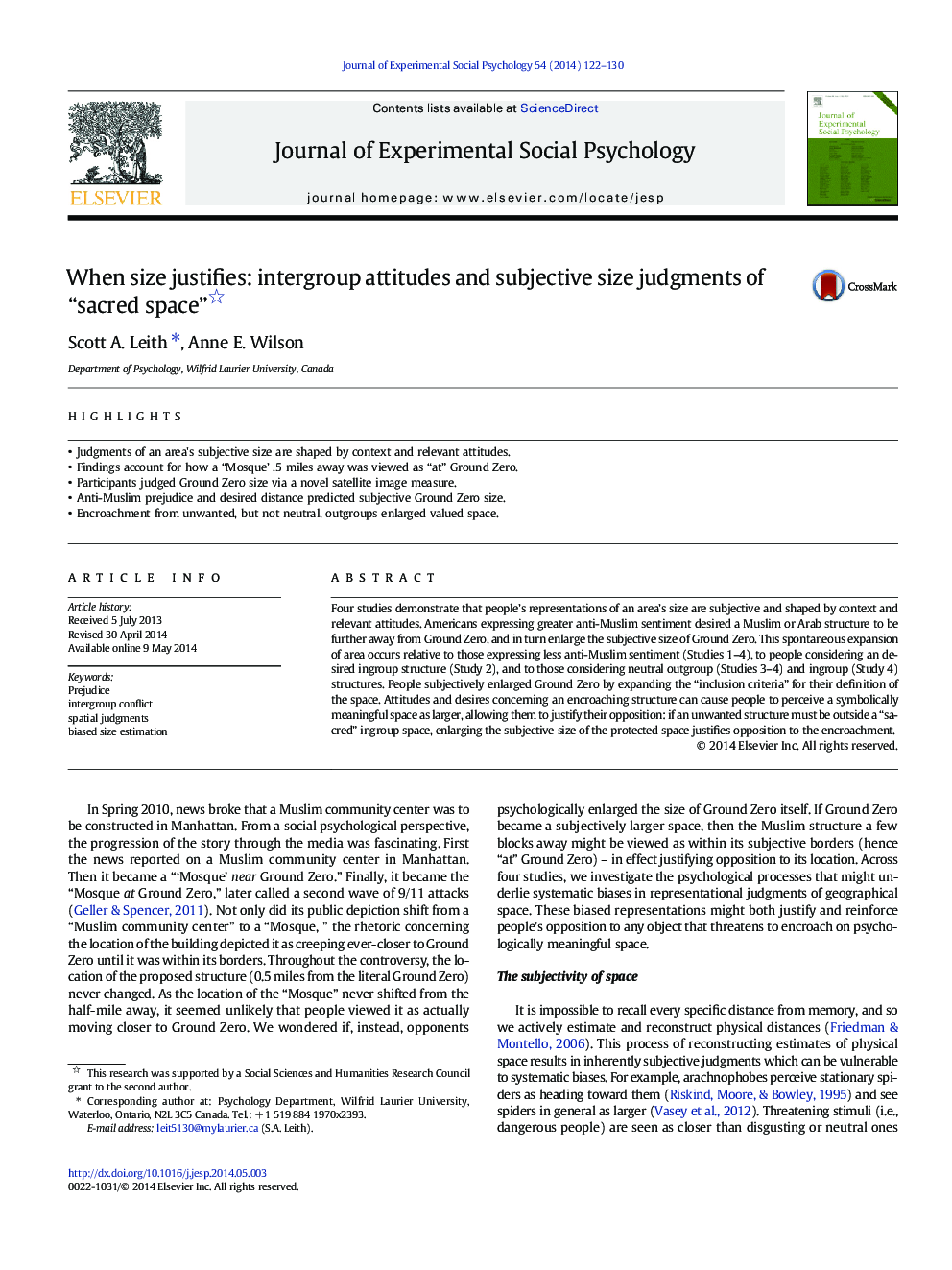| Article ID | Journal | Published Year | Pages | File Type |
|---|---|---|---|---|
| 947806 | Journal of Experimental Social Psychology | 2014 | 9 Pages |
•Judgments of an area's subjective size are shaped by context and relevant attitudes.•Findings account for how a “Mosque’ .5 miles away was viewed as “at” Ground Zero.•Participants judged Ground Zero size via a novel satellite image measure.•Anti-Muslim prejudice and desired distance predicted subjective Ground Zero size.•Encroachment from unwanted, but not neutral, outgroups enlarged valued space.
Four studies demonstrate that people’s representations of an area’s size are subjective and shaped by context and relevant attitudes. Americans expressing greater anti-Muslim sentiment desired a Muslim or Arab structure to be further away from Ground Zero, and in turn enlarge the subjective size of Ground Zero. This spontaneous expansion of area occurs relative to those expressing less anti-Muslim sentiment (Studies 1–4), to people considering an desired ingroup structure (Study 2), and to those considering neutral outgroup (Studies 3–4) and ingroup (Study 4) structures. People subjectively enlarged Ground Zero by expanding the “inclusion criteria” for their definition of the space. Attitudes and desires concerning an encroaching structure can cause people to perceive a symbolically meaningful space as larger, allowing them to justify their opposition: if an unwanted structure must be outside a “sacred” ingroup space, enlarging the subjective size of the protected space justifies opposition to the encroachment.
